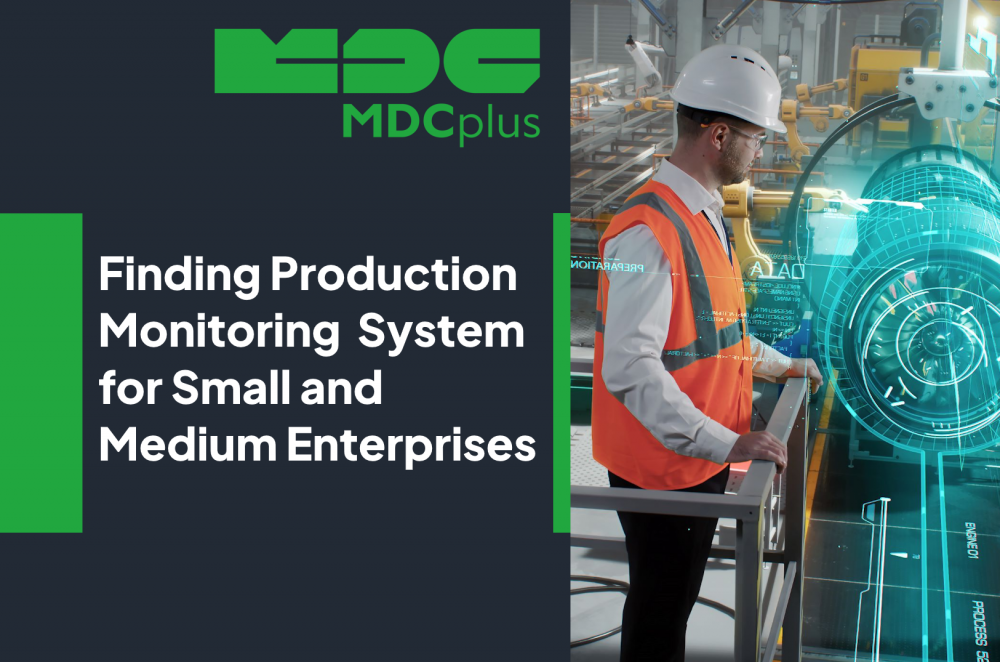Finding Production Monitoring System for Small and Medium Enterprises
Why Production Monitoring Systems Matter for Enterprises
For small and medium-sized enterprises (SMEs), the pressure to deliver high-quality products, control production costs, and improve efficiency is constant. But unlike large manufacturers, SMEs often lack the resources to absorb inefficiencies or implement expensive digital infrastructure.
Traditionally, production monitoring systems—tools that provide real-time data on manufacturing performance—were considered exclusive to large enterprises. Today, that’s no longer the case. With more accessible, modular, and affordable options available, SMEs can now tap into the power of production monitoring to compete more effectively.
Understanding Production Monitoring Systems for SMEs
A production monitoring system is a software and/or hardware solution that collects and analyzes real-time data from machines, operators, and production processes. It provides insights into key metrics like downtime, cycle time, machine utilization, and product quality.
Systems range from basic solutions—such as simple sensor-based machine tracking—to more advanced setups featuring IoT connectivity, cloud integration, and predictive analytics.
The good news for SMEs? You don’t need a high-end system to see meaningful gains. Even simple monitoring can yield insights that lead to better decision-making and improved performance.
Common Challenges SMEs Face in Production Monitoring
Limited Budget
Many SMEs hesitate to invest in monitoring systems due to the perceived high upfront cost of hardware, software, and integration.
Limited IT and Technical Expertise
Without a dedicated IT team, managing a complex system can feel overwhelming, especially when it comes to maintenance, troubleshooting, and updates.
Scalability Concerns
Some SMEs fear that their initial investment will become obsolete as their operations grow or evolve.
Resistance to Change
Adopting new technology can be met with skepticism from operators and managers, especially in environments with long-established workflows.
Key Factors to Consider When Searching for Production Monitoring Systems for SMEs
Scalability
- Choose systems that allow you to start small and expand over time.
- Look for modular platforms that support new devices and features without a complete overhaul.
Affordability
- Consider SaaS or subscription-based services that reduce upfront costs and include ongoing support.
- Explore open-source or hybrid tools that balance capability with cost.
Ease of Use
- Look for intuitive user interfaces and systems that require minimal training.
- Prioritize customizable dashboards that show only the most relevant information for each user role.
Cloud vs. On-Premise Deployment
- Cloud-based systems offer low-maintenance, remote access, and faster deployment—ideal for SMEs.
- On-premise systems may suit businesses with strict data security needs or limited internet access.
Integration with Existing Systems
- Ensure your monitoring solution can connect with current machines, ERP, or MES systems.
- Choose vendors that support open protocols like OPC UA or MQTT to avoid vendor lock-in.
Step-by-Step Guide: Implementing a Production Monitoring System in an SME
1. Assess Current Production Process
Map out existing workflows, machine types, and key challenges. Identify the top issues—whether it’s downtime, poor machine utilization, or inconsistent quality.
2. Set Clear Goals and KPIs
Define measurable objectives such as “reduce unplanned downtime by 20% in six months” or “increase first-pass yield to 95%.” Keep goals specific and achievable.
3. Choose the Right Monitoring System
Compare available tools—basic machine trackers, IoT solutions, and everything in between. Look for systems with proven results in small business environments.
4. Implement in Phases
Start with a limited rollout on a few critical machines or lines. Gather feedback, refine the setup, and scale gradually.
5. Training and Change Management
Offer hands-on training, simple guides, and clear communication about the benefits. Encourage operator input and ownership from the start.
6. Continuous Improvement
Use data insights to fine-tune processes, adjust maintenance schedules, or train operators. Review KPIs regularly and evolve your monitoring strategy accordingly.
Tools and Solutions Suitable for SMEs
Here are a few types of production monitoring solutions that fit SME needs:
- Affordable cloud platforms like MachineMetrics, OEE.co, or FourJaw.
- Open-source tools such as MyCNC or Node-RED-based systems for basic tracking.
- Subscription-based systems like MDCplus for scalable, user-friendly monitoring.
When selecting a solution, consider:
- Usability and training resources
- Customer support responsiveness
- Integration capabilities
- Scalability and upgrade paths
Making Production Monitoring Accessible for SMEs
Production monitoring isn’t just for large manufacturers anymore. With the right approach, SMEs can use these tools to gain control over their operations, improve efficiency, and make smarter business decisions—without breaking the bank.
The key is to start simple, customize for your needs, and scale as you grow.
Ready to take the first step? Explore tools like MDCplus that offer flexible, cost-effective monitoring systems designed with SMEs in mind. It’s time to turn your shop floor into a smart, connected engine for growth.
About MDCplus
Our key features are real-time machine monitoring for swift issue resolution, power consumption tracking to promote sustainability, computerized maintenance management to reduce downtime, and vibration diagnostics for predictive maintenance. MDCplus's solutions are tailored for diverse industries, including aerospace, automotive, precision machining, and heavy industry. By delivering actionable insights and fostering seamless integration, we empower manufacturers to boost Overall Equipment Effectiveness (OEE), reduce operational costs, and achieve sustainable growth along with future planning.
Ready to increase your OEE, get clearer vision of your shop floor, and predict sustainably?
